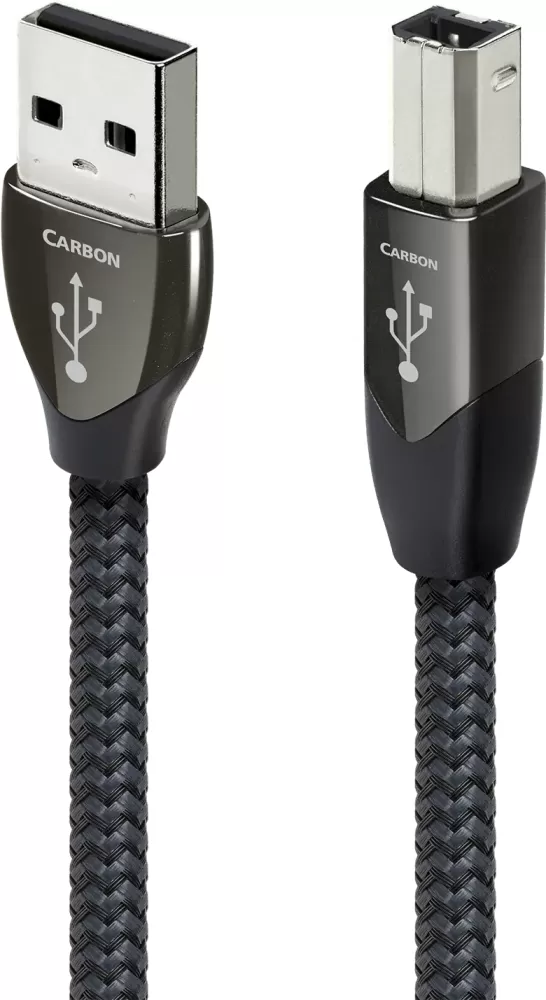The AudioQuest Carbon USB cable is purpose-built for high-performance digital audio and data transfer. Designed for linking a PC to a USB DAC or audio interface, or connecting a computer or server to a portable standalone hard drive, it delivers maximum signal clarity with minimal interference. High-purity 5% silver conductors reduce signal loss and maintain precision, while innovative Carbon-Based Noise-Dissipation technology efficiently neutralizes radio-frequency interference, ensuring a robust and reliable connection for demanding audio and computing applications.
Solid 5% Silver Conductors
The AudioQuest Carbon USB cable employs solid conductors enhanced with 5% silver plating, engineered to minimize electrical and magnetic interference between strands. In digital applications where high-frequency signals predominantly travel along the conductor's surface, AudioQuest applies increasingly thick layers of silver to its Long-Grain Copper (LGC) conductors. This strategic placement of superior silver on the exterior not only improves noise-dissipation but also maximizes overall performance in a cost-effective manner.
Carbon-Based 3-Layer Noise-Dissipation
Achieving full shield coverage is just the starting point. AudioQuest’s Carbon-Based 3-Layer Noise-Dissipation system takes protection further by using alternating layers of metal and carbon-loaded synthetics to effectively “shield the shield.” This design actively absorbs and reflects unwanted radio-frequency energy before it can alter the equipment's ground reference, thereby preserving the integrity of the digital signal and preventing distortion.
Hard-Cell Foam Insulation
To maintain the precise alignment of signal pairs, the Carbon USB cable utilizes Hard-Cell Foam Insulation. Traditional insulating materials often absorb energy from adjacent conductors and then release it as distortion. In contrast, this insulation is nitrogen-injected to create microscopic air pockets that do not absorb energy, while its rigid structure keeps the conductors in a stable configuration along the entire cable length. This consistent geometry results in a stable impedance, further reducing distortion.
Direction-Controlled Conductors
Every drawn metal strand has an inherent directional grain structure, which can affect radio-frequency impedance if not properly managed. AudioQuest controls these variations by determining the optimal orientation through rigorous testing of each metal batch. The connectors are marked with arrows that indicate the best alignment for both the shield and ground, ensuring that any induced noise is effectively drained away. This careful management of conductor directionality is a key element of AudioQuest’s advanced noise-dissipation technology, contributing to superior digital performance.
|
|





Validate your login
Sign In
Create New Account